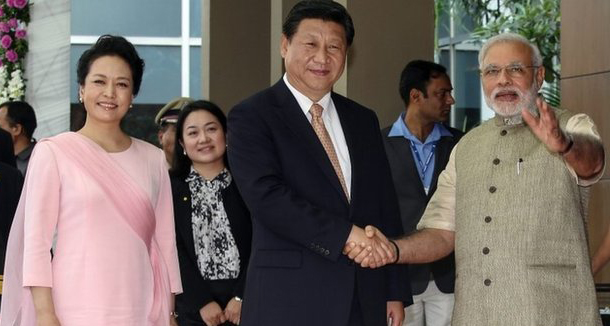Chinese president Xi Jinping, in a historic visit to India, has opened up new windows of opportunity and signed landmark deals with the country. Not only will India see China investing $20 billion on infrastructure over the next five years, but both sides also focussed on increasing co-operation in trade, space exploration and civil nuclear energy. The hospitality and personal touch of the Indian Prime Minister, Narendra Modi, has also been noteworthy, given that the visit began in Modi’s state of Gujarat rather than the conventional meeting in the capital city of New Delhi.
For the Tibetan community in India, one of the largest in the world outside of Tibet, this visit symbolised a hope for the bringing up of the issue of Tibet, one that has consequences for India too and not Tibet alone. Petitions were sent to Modi by various activist groups, including international Free Tibet organisations Students for a Free Tibet (SFT) and the Tibetan Youth Congress (TYC), urging him to raise the issue with Xi. The two organisations also spearheaded peaceful demonstrations staged in both New Delhi and Ahmedabad, which were both visited by Xi during his three-day visit.

Exiled Tibetan youth hold banners and shout slogans during a protest against a visit to India by Chinese President Xi Jinping in Delhi
Photo: goingkuwaiti
During past visits of Chinese officials, Indian police have prevented Tibetans from protesting against China’s control of Tibet, which Beijing claims as its own territory. Since Xi’s arrival, groups of protesters, many of whom were college-going students, were escorted away from the Chinese embassy in New Delhi, while shouting anti-China slogans. At New Delhi’s main Tibetan neighbourhood, Majnu Ka Tilla, hundreds of Tibetans took to the streets after they were barred from carrying out a protest march from Ram Lila Maidan to Jantar Mantar in central Delhi. As talks took place between Modi and Xi, protests in Gujarat were also curbed, with around 60 Tibetan students, including 25 women, being detained by the Gujarat police as a pre-emptive measure.
The connectedness of the three countries in question – India, Tibet and China – goes back a long way. India has always had a long and complex relationship with Tibet, even before its own independence. When China’s military pushed into Tibet a half-century ago, thousands of people – including the spiritual leader of Tibetan Buddhism, the Dalai Lama – fled to India, which welcomed them with open arms, a move that has since strained India-China relations. Between India and China, two emerging superpowers in the world, mutual suspicion has always been the chosen mode of conduct. The two countries share a long militarized border, went to war briefly in 1962 and have often faced territorial disputes.
The border disputes have seen little progress over the years and even a week before Xi’s visit, Chinese soldiers were spotted trying to construct a temporary road into Indian territory across the Line of Actual Control (the de facto boundary) in the Ladakh region. Indian troops saw more than 200 Chinese People’s Liberation Army (PLA) troops with 12 heavy vehicles including cranes, bulldozers and a Hummer trying to level a rivulet and construct a temporary road two kilometres into Indian territory. The Indian forces confronted the PLA and asked them to withdraw, resulting in a series of face-offs that has once again created tension between the two countries.
While this was one of the most important diplomatic visits to India, the Tibetan Government In Exile, officially known as the Central Tibetan Administration (CTA), sat in Dharamshala hoping for a resolution to the Tibet issue during Xi’s visit, as expressed in the Parliament session in early September. The CTA also submitted an appeal letter to Xi Jinping through the Chinese Embassy in New Delhi, urging him to permit India to send a delegation of Tibetan parliamentarians from exile to find out if China has really lived up to its claims on Tibet’s development and happiness. However, it has not received a response so far.
His Holiness the Dalai Lama had also made his hope for the same clear, and Tampa Tsering, His Holiness’s representative in Delhi, had asked India to “proactively take up the Tibet issue” with China and “find a peaceful solution to the issue”. But in the event, Xi’s visit ended without the emergence of any agenda for Tibet.





 Print
Print Email
Email